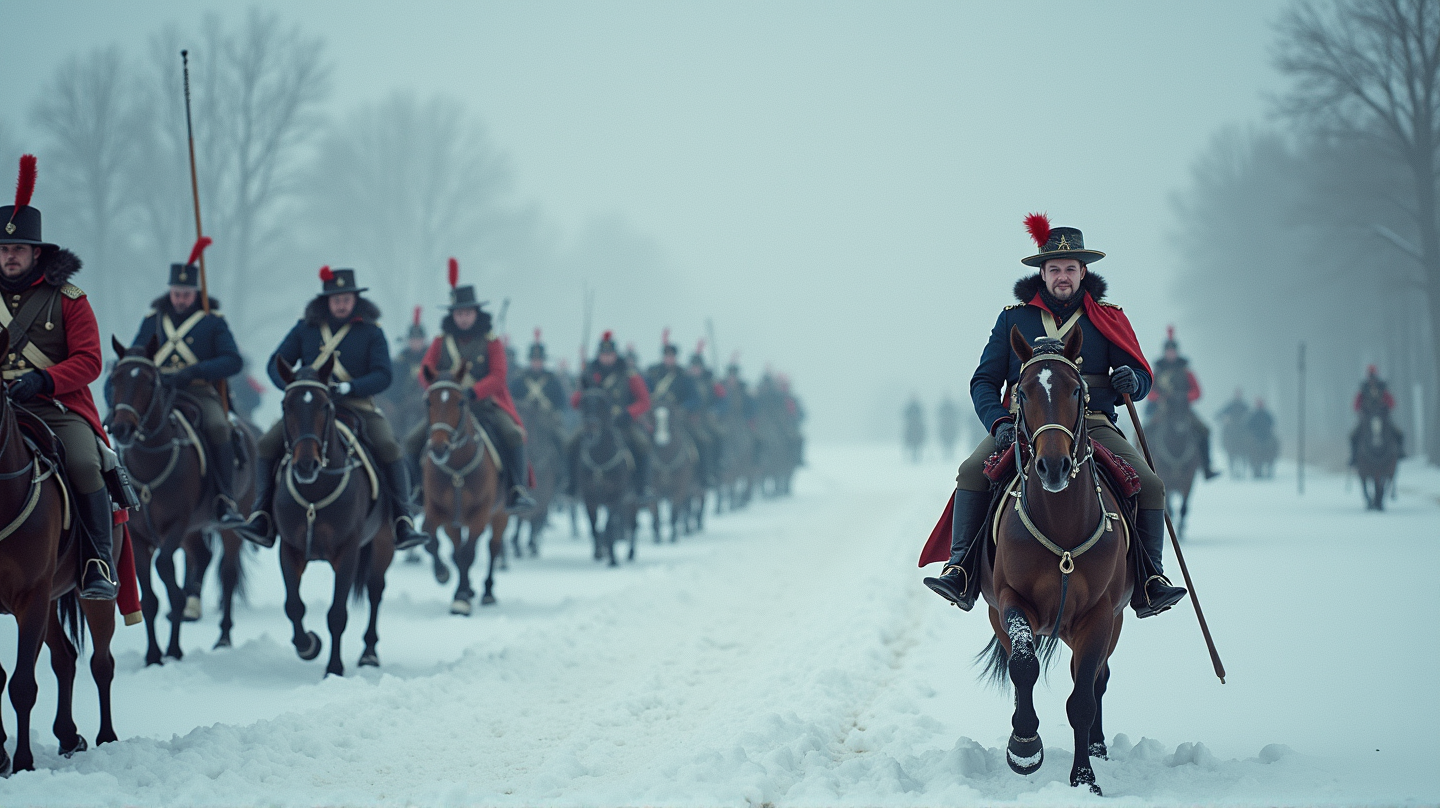The Silent Assassins: Bacteria on the March
In the frozen depths of the Russian winter, Napoleon’s troops encountered an enemy they could not vanquish—microbes. Latest scientific breakthroughs, as uncovered by geneticist Nicolás Rascovan and his team at the Institut Pasteur, unveil a chilling narrative that extends beyond the ravages of famine and bitter cold and into the microscopic realm. Delving into ancient DNA from 13 Napoleonic soldiers’ teeth, researchers uncovered fever-causing bacteria that may have coalesced with nature’s harsh elements to deal a devastating blow to the once invincible Grande Armée.
Trying Times: From Glorious Conquest to Desperate Retreat
The grandeur of Napoleon’s extensive conquests across Europe stood in stark contrast to the desolation and harsh reality faced as his troops stepped into a Russia determined to use its own land as a weapon. The once-brilliant campaign turned into a grueling march, where soldiers faced unforgiving chill and crippling hunger, and now, we learn, potential infection not recognized in the bloody pages of history. “It’s just a bad, bad, bad scene,” explains historian Rafe Blaufarb, echoing the torment embedded in the retreat’s every frozen footstep.
Discovering Lost Stories in Soldiers’ Teeth
Rascovan’s groundbreaking use of shotgun sequencing represents an advanced step towards understanding the genetic tapestry of history’s afflictions. Rather than targeting known pathogens like researchers did in the past, this approach casts a wide net, analyzing small DNA fragments to capture an immersive view of pathogenic presence. The results? Traces of Salmonella enterica and Borrelia recurrentis—bacteria that cause paratyphoid fever and relapsing fever, respectively.
The Bittersweet Ode to Survival
In a stark juxtaposition to the swathes of soldiers who succumbed to these hidden biological adversaries, the enduring mystery remains: how did any soldier survive? From genetic fragments of disaster to the fragmented lives saved, this hidden narrative suggests the interplay of luck, resilience, and unknowable resolve. “By no means are we trying to say that these two pathogens were a major cause of death,” elaborates Rascovan, acknowledging the complexity of history’s interwoven narratives.
A March Engrained in Memory
As the stoic columns of Napoleon’s retreat fade into history’s rearview, the extraordinary interdisciplinary research presented paints an evocative tableau of silent battles within the wars of the past. Ultimately, the amalgamation of cold, starvation, and disease marked a watershed moment that forever altered the tides of Napoleonic ambition, leaving it along with us to ponder the indelible prints every journey leaves behind.
According to Science News, these recent findings bolster an intriguing narrative of human endurance and microbial persistence, framing an authentic reflection of history challenged by science.
